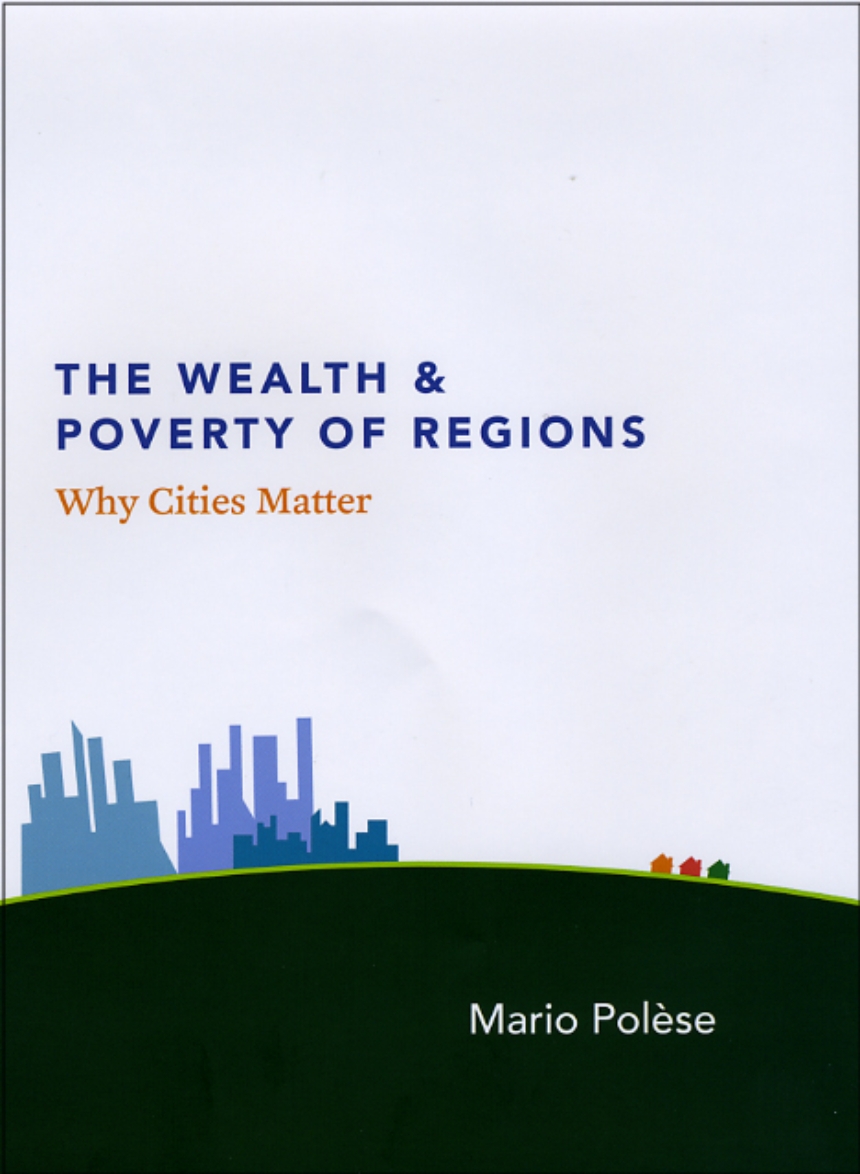The Wealth and Poverty of Regions
Why Cities Matter
As the world becomes more interconnected through travel and electronic communication, many believe that physical places will become less important. But as Mario Polèse argues in The Wealth and Poverty of Regions, geography will matter more than ever before in a world where distance is allegedly dead.
This provocative book surveys the globe, from London and Cape Town to New York and Beijing, contending that regions rise—or fall—due to their location, not only within nations but also on the world map. Polèse reveals how concentrations of industries and populations in specific locales often result in minor advantages that accumulate over time, resulting in reduced prices, improved transportation networks, increased diversity, and not least of all, “buzz”—the excitement and vitality that attracts ambitious people. The Wealth and Poverty of Regions maps out how a heady mix of size, infrastructure, proximity, and cost will determine which urban centers become the thriving metropolises of the future, and which become the deserted cities of the past. Engagingly written, the book provides insight to the past, present, and future of regions.
288 pages | 2 halftones, 23 line drawings, 3 tables | 6 x 9 | © 2009
Economics and Business: Economics--Development, Growth, Planning
Reviews
Table of Contents
List of Illustrations
Acknowledgments
Preface
1 Why Do Some Places Generate More Wealth Than Others?
Places in a Shrinking World
History and Industrial Legacies
2 Size and Location
The Four Golden Rules of Regional Growth
The Positive Relationship between Size and Wealth
The Seven Pillars of Agglomeration
Why Smaller Cities Exist
Location
A Simple Template
3 The Regional Origins of Wealth: Where It All Began
When Location and Size Mattered Less
Water and Waterways
A Tale of Two Continents
Europe’s Blue Banana
North America’s Bipolar Destiny
South of the Border—Mexico
Lessons from Europe and North America
4 Why Is the Geography of Wealth More Unequal in Some Nations?
On the Use of the Word “Disparity”
Why Regional Disparities Happen—and Should Eventually Disappear
Why Regional Disparities Are Higher in Some Nations
Why Are Regional Disparities More Difficult to Overcome in Some Nations?
Why the United States Is Different
5 Cities and National Economic Growth: An Asymmetrical Relationship
A Short History (and Explanation) of Urbanization
Urbanization Is an Outcome of Economic Growth (Not the Other Way Around)
Is Urbanization Different in Developing Nations?
Third World Cities: Victims of Progress?
The Difference between the Foundations of National and Local Economic Growth
6 Regional Growth in the Green and Gray Knowledge Economy
Hedonic Regional Growth
Green Migrations: Sun, Surf, and Cafés
Gray Migration: Golf, Châteaux, and Boardwalks
Size and Location Also Matter for Tourism
Revisiting the Rules of Regional Growth
Archipelagos of Growth
Zero-sum Growth
Some Places Will Decline
Some Places Will Continue to Grow (or Decline) for Unique Reasons
7 What Have We Learned?
Some Places Will Always Be Wealthier than Others
Cities Will Continue to Grow
The Diversification of the Sources of Regional Growth
The Never-ending Search for the Right Strategy
The New Importance of Place: People
Data Sources: Tables, Figures, and Maps
Notes
Bibliography
Index